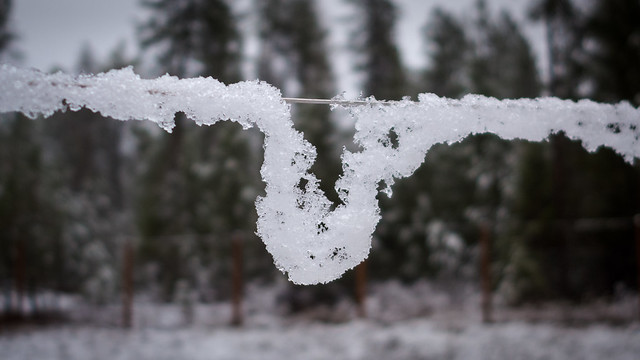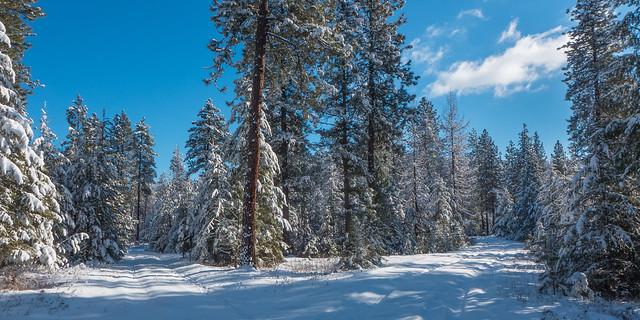
A friend of mine from my old Laestadian Lutheran church told me the other day that he once went back so he could drink and get stoned with the guys there. It seems that their parents had forbidden them from hanging out with him once he attained unbeliever status, and he didn’t care for the hard-core attitude of the party crowd at his school. The school kids he did like didn’t party as much as the Laestadian guys.
So he “repented” and was allowed back into the company of his lifelong friends, free to live it up with them on Saturday nights and sit through sermons alongside them on Sunday mornings. Their well-meaning parents only witnessed the second part of that social interaction, of course. That was a while ago; his partying days are over and he has left the church for good now.
There are a lot of people who go back for a while on their way out, for a variety of reasons that are seldom so amusing as I found his to be. Fundamentalist religion exerts a powerful social and psychological pull that forces them into a return trip or two before–if they can achieve escape velocity–their final trajectory to the universe beyond. They might spend years or even lifetimes stuck in unsettled orbits around Planet Faith, well within sight of everyone down there but at a tolerable distance from whatever absurd rules and doctrines made them take off in the first place.
Another person provided me with a fascinating little story about how this worked in his own life for over 20 years. He “encountered something that seriously strained” his faith and “started running up against all kinds of” conflicts between science, the Bible, and faith. “I didn’t know how to deal with this stuff and eventually I even began to doubt God,” he said. There was a lot of guilt,
even though I was living a life that would seem very moral and praiseworthy by most peoples’ standards. Unable to reconcile my conflicts, I simply unplugged and became religiously inactive. I did my best to simply switch off religion from my life and I found a lot of joy and richness in my new way of being but, having never really dealt with my faith issues, I still carried a lot of my old worldview under the hood. Also, coming from a very conservative and faith-oriented family, I had to keep up appearances for my parents’ sake.
He became close with a woman in the church he “had loved from afar for years,” and
eventually it became obvious that we were headed for marriage. But she was committed to marrying someone who was strong in the faith. And to me, a faithful life together with her sounded like a wonderful future. I committed to her and to myself that I would recommit myself. And boy did I try. From the beginning I had no intention of just going along to get her to marry me. I was going to be that man of faith that I thought I should be.
But his issues with the faith remained, as did his feelings of being inadequate and unacceptable. He diligently studied the church’s publications that attempted to address those issues, but they just weren’t cutting it anymore. Indeed, he said, they were
introducing me to more problems than I had been aware of originally. More and more it seemed like the apologetic answers were falling flat. After more than 20 years I finally realized the problem. This method of answering questions, which appeared to be scientific, was actually the exact opposite of science. If you start with your conclusion and cherry pick your evidence you can “prove” anything you want. It was anti-science.

Finally one day, he came across a passage of scripture that he just couldn’t reconcile. “My brain hurt from trying,” he said. “Finally I thought, ‘Hey, maybe I don’t have to believe all of it!’ Then, a few seconds later, ‘Maybe I don’t have to believe any of it!’” And then his “entire world changed. It was like the parallax shift when you close one eye and open the other, but the view from the other eye was of a completely new world.”
His wife remains in the church but is supportive of her husband, he said, and a “huge weight has been lifted. My greatest joy now is to be able to say ‘I don’t know’ and to ponder the possibilities. The need for certainty was so much more of a burden than I realized at the time.”
It’s a powerful story, isn’t it? Does it make any difference when you learn that my correspondent wasn’t a Laestadian or even a Protestant Christian? He’d never heard of Laestadianism before running into me.1 That last deal-breaker passage of scripture he encountered was in the Book of Mormon, and the sign out in front of the building he still visits with his wife reads, “Church of Jesus Christ of Latter-Day Saints.”
There are certainly differences between the church buildings and some of their troublesome scriptural passages. But they build upon the same shifting sands of the Bible–with all its contradictions, ancient outrages, and indisputable errors. And the stories–the hundreds of stories from people disillusioned with all their varied religions–sound much the same.

The author of I’m (No Longer) a Mormon: A Confessional writes eloquently about her own orbit around the LDS Church. “I felt like Eve in the Garden of Eden: My eyes had been opened. I had been lied to. Worse, I had spent decades living my life for those lies, trying to fashion myself into a being that conformed to the standard of those lies.” 2
Yet she stays, as do many others, and asks her readers to understand “our absolute desperation to believe what we’ve been taught, even if it makes absolutely no sense at all. Please pity us. This is no way to live, and coming out of it is pure and absolute agony.” 3
She does a frank assessment of the costs and benefits. “If I walk away from this church, everything I have ever known evaporates instantly.” She would forsake her faith along with her “understanding of the way the universe operates.” She would be largely ostracized or at least “publicly lambasted” by her entire social network, and lose the support of most of her and her husband’s family.
And if she leaves? What does she get from that? “The rug pulled out from under me. Live a lie, or live with the consequences. And I’m not abandoning all and following after Truth. I’m not leaving everything for something better. I’m just leaving.” 4
One ex-Laestadian correspondent “wanted to cave many times” but “knew I’d be back to square one.” That pull has lessened over the years, though it certainly can be a strong one. My own process of leaving is a testament to that, requiring a year of full-time effort to research and write a hefty doorstop of a book about the church: “Examining this pearl of Conservative Laestadianism was in some sense to cherish and value it. But I also had a very personal need to confront it, to stare down its threats and dismantle–to my own satisfaction at least–its most outrageous claims.” 5 There is, another correspondent notes, “such a huge codependency on everything church.”
Others leave and never look back. My favorite story in that regard was one I heard secondhand about a guy who announced to his family, “Not believing. Don’t want to talk about it.” And for him, that was that. An ex-Laestadian friend of mine has much the same mindset: “No interest in returning to the dark abyss.” Another says, “Knowing how hard it was to leave the first time was part of what kept me from caving in to pressure to come back. I didn’t want to go through it again, and once I was out, I knew I wasn’t going back to stay.”
Some ex-LLCers frame the matter in terms of personal integrity:
-
“The pressure is real, although I don’t know how I would look at myself in the mirror if I went back.”
-
“I have never considered going back. Even if I did in the future for who knows what reason, I would never be a ‘real’ believer again because I don’t agree with the church, so I would just be pretending.”
“Feeling very vulnerable, awkward and emotional,” another person “cracked and repented. Two hours later I started feeling the same old anxiety creeping in.” There was the old “doubt and disbelief,” which had started going away the further this person got from the LLC. “So I knew it wasn’t a real thing, I just had put myself in a very vulnerable spot. And when I went to church, people I didn’t know very well were more happy about it than I ever was. I knew nothing had changed inside, I had to decide–did I want to be truthful to myself or did I want to conform to the group?”
It’s not an easy path, still difficult in fact, “but I think it is the right way for me to go.”

The difficulty of the path is beautifully described–again with reference to Mormonism–in Libbie Hawker’s lyrical book Baptism for the Dead. The first-person protagonist reflects on an emotionally difficult departure from her childhood faith. She’d been having a passionate affair with “X,” a traveling photographer and painter right out of The Bridges of Madison County. He’s a shadowy outsider who fit his key into the lock of her latent doubts, revealing the broader perspective of a world outside the small-town Mormonism that had so frustrated her.
They flee Rexburg, Idaho for a photography road trip, taking in the natural beauty of the American West by day and each other in motel room beds by night. But the church follows her.
She appreciates a certain irony about that, one that contributes to the return-trip phenomenon: Only after leaving Rexburg had she “come to doubt my doubt.” Everyone she’d “ever known was in that town. I could not picture a life that didn’t revolve around my community, assuming I could still call it my community at all. Yet what else did I have? An artist I had met only days before, the interior of his car, and the shifting crowds at scenic overlooks and highway rest stops.”
As she and X drive through the Grand Tetons and she reflects on her poor gay husband back home who’d tried to fit into the Mormon mold just like she had, unsuccessfully, she muses about “this ember inside of me, an animal red, an awful crimson. No matter how I try to smother it, it continues to glow.”
She feels crippled, silently wondering to herself and to X “how even a God I don’t believe in still has the power to rub the scales from my wings, how even when I am with you I can still feel that miserable brand inside me, smoking, and how sometimes I wish I did believe, just for the simplicity of it, for the ease of knowing that to want you and to have you is wrong, absolutely, unmistakably, simply–even though it feels as right as breathing.” 6
But she experienced all this with no belief in and thus no “fear of a vengeful God.” So why, she asks,
even after I left, did that wretched guilt consume me? It smoldered inside me; it obscured the world with its sickening smoke. And how could I feel so splendidly alive, so awakened to the world, with the bird in the pine trees scolding inside my head, with the pines moving in the breeze of my pulse, with the sunrise coloring my skin and my skin coloring the sunrise, and yet feel so ashamed of you, X, of my love for you, which was the very thing that had finally made me live? 7
Our other Mormon author, Regina Samuelson, concludes her book still in the closet, still uncertain about what to do, moving “forward one step at a time, hurt but hopeful, and desperately seeking Truth, no matter how difficult that truth may be for me to cope with or accept.”
“Please help me,” she asks from behind the veil of her pen name:
Please help us. While you cannot exactly understand our position unless you, too, have experienced it, I pray fervently that this book has helped in some small way for you to relate to those of us who are searching for answers, for understanding, and for love.
We are alone.8
It does seem that way at times. But she is not alone, and neither are you. Viewed as a whole, there are thousands of people leaving Mormonism and Laestadianism and many other high-control religious groups. There are online forums and websites for apostates from the Jehovah’s Witnesses, the Exclusive Brethren, Iglesia ni Cristo, the “Truth”, and even Islam–often at significant personal risk in that last case.
You can leave, for good, if that’s what you want to do. If you’re not ready–now or ever, for your own set of entirely understandable reasons–that’s perfectly fine. Lots of people manage to have happy, fulfilled lives inside of restrictive religions. For some of them, I’d wish nothing better. And it’s not like there’s any sort of hell awaiting you after you die because you decided not to become an unbeliever.
The reality, even from the vast majority of the Bible’s indications on the subject, is that there’s no hell at all. There is just this single brief lifetime, and the grains of its remaining days are dropping through that little passage in your hourglass one by one. So, if you are ready to leave, then do it already! Enjoy those remaining days free of that “dark abyss,” making your own choices about your life and with a set of your own beliefs–whatever they are–that you can openly and honestly call your own.
Notes
-
He told me, “I had to look up Laestadianism. I didn’t even know there was a fundamentalist pressure cooker form of Lutheranism. I come from Norwegian stock, so maybe I’m already LLC at the core. Double-jeopardy.” Well, there are some Norwegian Laestadians, but alas, they are the wrong kind of Laestadian in the eyes of my old church, along with the OALC, ALC, FALC, and IALC. ↩
-
Regina Samuelson (a pseudonym), I’m (No Longer) a Mormon: A Confessional. Self-published (2012), p. 18. ↩
-
Samuelson at p. 85. It seems she might be making more of an official exit soon, though: nolongeramormon.blogspot.com/2014/01/im-officially-ex-mormon-by-regina.html ↩
-
Samuelson at p. 176-77. ↩
-
An Examination of the Pearl, Epilogue. It took me quite a while, but I can honestly say that I am over being a Laestadian or even an ex-Laestadian. These in-depth Laestadian-related essays, inspired though they are by stories I hear about people’s difficult experiences, are becoming something of a chore to write at this point. There are unlikely to be many more of them, though you can probably expect a little something on April 1 for years to come. ↩
-
Libbie Hawker, Baptism for the Dead, Running Rabbit Press (2013), pp. 162-63. If you read just one book I recommend on this blog, make it that one. See libbiehawker.com/baptism-for-the-dead. ↩
-
Hawker at p. 179. ↩
-
Samuelson at p. 183. ↩